
After arrival, our guide will wait for you at the airport and then we will drive you to the hotel. Welcome to Beijing, China’s capital. Beijing is the center of politics, transportation, culture, tourism, and international communication in China. Therefore, the ancient city with a long history of more than 3000 years, embraces 7300 cultural relics and 200 scenic spots such as the largest palace in the world--Forbidden City. The weather of each season in Beijing is totally different. In spring, there is fine dust carried by wind in the air, and it is a little cold. It is hot with showers in summer. With the sunny, mild, and cool weather, autumn is the golden season for tourism. But in late autumn, it is cooler in the morning and evening and hotter at noon. In winter it is dry and cold with little snow. But whenever you visit Beijing, you will feel the traditional culture and modern charm of the city.
Free Time Suggestion:
We highly recommend that you can go to the Silk Street. Silk Street, built in 1980, today becomes a department store. It includes all kinds of Chinese characteristic commodities such as band clothing, handicrafts, pearls and silk, and antiques. On top of that, various foods are also inviting, like Peking Roast Duck, West style cafes, fast food, and convenience stores. You can enjoy some authentic Beijing food and traditional Chinese handicrafts for a relaxing afternoon.
After enjoying breakfast, you are going to visit Tian’anmen Square. It was established over 500 years ago, which is the largest city square in the whole world. It was as a gate of the Forbidden City in Ming (1368–1644) and Qing (1636–1912) dynasties. Tian’anmen is composed of red wall brick, gold roof and five arches. The People’s Republic of China held the founding ceremony over there on October 1st, 1949. When you stand in front of it, a large picture of previous President Mao Zedong on the wall of Tiananmen will immediately catch your eyes. Now, the solemn Tiananmen Square has become the symbol of China.
Next, you will visit the Forbidden City (closed each Monday), the imperial palace of Ming and Qing dynasties. It includes more than 70 palaces with a total area of about 720 thousand square meters. Its material is wooden. The tourists who like cultural relics can go to the Palace of Compassion and Tranquility or Cining Gong where today becomes a sculpture hall to display more than 40 rare treasures including stone sheep, stone Buddha, and Bodhisattva statues, and so on. The palace was once the living place of Empress Dowager. A visit here is helpful for you to understand the recent history of China.
After lunch, the next spot is the Summer Palace. The Summer Palace is the royal garden of the Qing dynasty. It is the largest and best-preserved garden in China. 130 years ago, it had been once ruined by the Anglo-French allied forces. Nowadays, it becomes splendid again after being rebuilt. Summer Palace is a massive landscape garden covering an area of 2.97 square kilometers. And three quarters of it is the lake. The visitors can take a cruise to look around the Palace. You will see all kinds of Chinese ancient buildings and rockeries. Various trees pruned well are like elegant beauties planted everywhere in the palace. Summer Palace has a three-hole wooden suspension bridge. The deck can be lifted to facilitate the passage of boats.
Option:
Beijing Roast Duck is the most representative of Beijing's famous food. It is famous for red and crisp skin, tender meat, and mellow taste. After all the complicated craftsmanship, the roast duck looks rosy and attractive. Pick up a piece of duck with chopsticks and place it on a very thin wheat pancake, with shredded cucumber and sweet bean sauce, and you can get the most authentic Beijing Roast Duck flavor. When you taste it, its oil and gravy will spill out, but you will not feel it greasy. It's definitely worth a try!
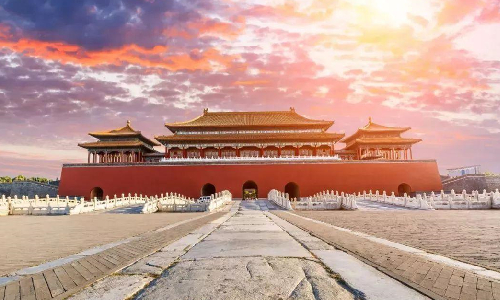
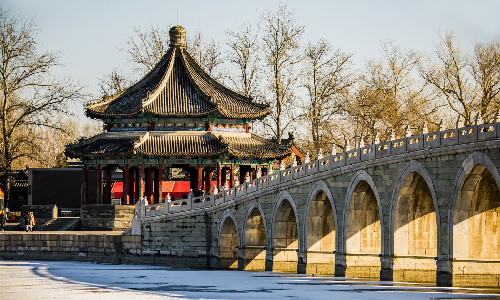
After breakfast, you will visit Mutianyu Great Wall, which was built in 1368. It is located in Huairou District, Beijing, 73 kilometers away from the urban area. We'll drive there for about an hour and a half. Mountains and hills surround it with lush forests. The coverage rate of plants is up to 90%. With a length of 5,400 meters, the section of the Mutianyu Great Wall is the longest in China. Mutianyu is one of the important passes that protect the capital of the Ming Dynasty, and many wars had happened over there. Standing on the high Great Wall, you will feel the grandeur of the natural scenery and also experience the scene of the soldiers defending the enemy in ancient times.
After lunch, we will go back downtown to visit the folk houses with Beijing characteristics, Hutongs. Most of Beijing's Hutongs were formed during the Yuan Dynasty (1271–1368) in the 13th century and have experienced hundreds of years. It is around the Forbidden City, most of the formation in the Yuan, Ming, and Qing dynasties. The buildings in the Hutongs are all quadrangle dwellings. You can visit Nanluogu Alley, which is one of the most popular and bustling Hutongs in recent years. It's really enjoyable to sit in a retro little restaurant and eat local food. You can also take a rickshaw around Hutongs, as well as visit a local family to feel the real life of local people.
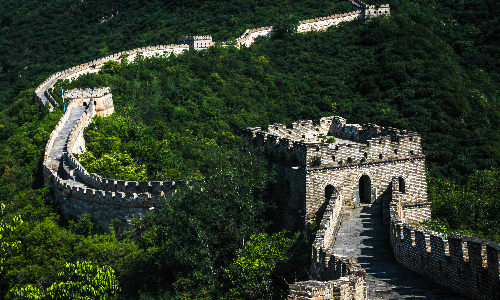
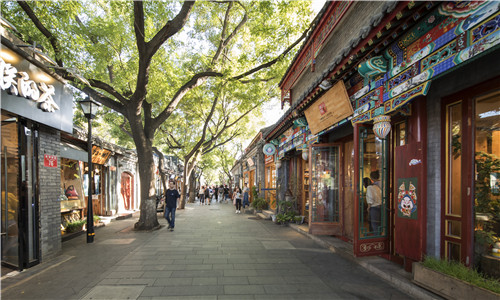
 Datong
Datong Today you are going to take the estimated train G2503 8:10/9:56 in Beijing and arrive in Datong of Shanxi Province.
Subsequently, our guides will take you to visit Hanging Temple. Hanging Temple is exactly built on cliffs. Located in a small basin in a deep valley, the temple is suspended in the middle of a cliff whose crest protrudes like an umbrella to protect the temple from the rain. Every time there is a rainstorm, the raindrops from top to bottom, and the Temple is decorated with rows of glittering and translucent water curtains. Hanging Temple mainly is made of wood. There are several wooden pillars suspending at the end of the Temple. They really look like long horsetails. All in all, Hanging Temple is not only a temple for worshiping Buddha, but also a very steep building worth seeing.
After lunch and rest, we are going to the Yungang Grottoes. The Yungang Grottoes has a history of more than 1500 years. There are more than 51,000 statues in the grottoes. To our amazement, not only the number of them is huge tremendously, but also the sizes vary extremely different. The largest is 17 meters high while the smallest is only 2 centimeters. Some of them vividly are sitting still, some singing and dancing with a living look, or beating drums and bells, or playing the piccolo and the pipa that is a plucked string instrument with a fretted fingerboard as if they are welcoming the visitors. These statues also clearly exude exotic styles, because on the basis of Chinese traditional sculpture art, it absorbs and integrates the art of Gandhara in India and Persia. Each of the central grottoes is divided into two rooms, with the main Buddha in the middle, and the cave walls and roof are covered with reliefs. It is a wonderful choice for those visitors who especially are fond of architecture, statues, music, and religious cultures.

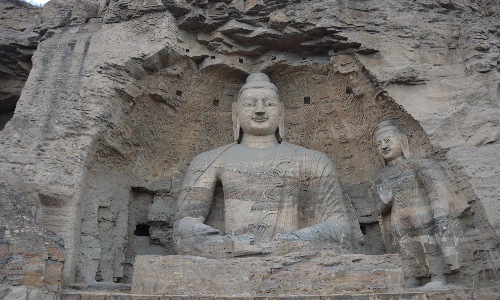
 Pingyao
Pingyao Today you will leave for Pingyao of Shanxi Province by estimated train D5367 12:05/14:57. Before your Pingyao tour, our guides will send you to the hotel so that you can have a rest.
The first spot you will visit is Shuanglin Temple. It is a delicate art gallery of painted sculptures. It had witnessed the ups and downs of 15 dynasties of China and was rebuilt many times in Ming Dynasty. Most of the existing buildings and statues are relics of the Ming Dynasty. It is divided into east and west parts. The west is the temple courtyard. To the east is the Zen Garden, etc. Shuanglin Temple has a very long history, with treasures of Tang Dynasty, tablets of Song, bells of Ming, various old buildings, color sculptures and wall paintings and other rare treasures. The statue of a goddess of Mercy is a splendid work of color sculpture in Shuanglin Temple. She sits on the red lotus petals with one leg; the whole body is protruding from the wall, looking serene and calm. Her peace creates strong contrast with the choppy waves in the background.
Option:
One of Pingyao's famous snacks is Pan-Fried Stuffed Buns. It is the oblate shape, golden on top and bottom, crisp outside, and fresh inside. It has soft skin and is made from wheat flour. Its filling is various such as mutton, pork, vegetables. This snack with a variety of fillings is sure to satisfy your taste buds!
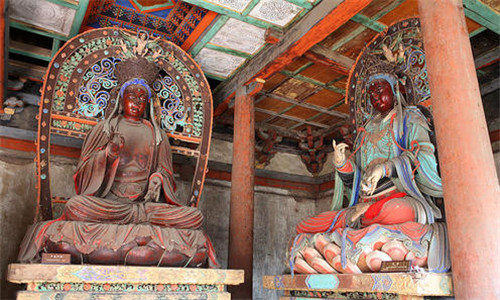

After breakfast, you will visit Pingyao Ancient Town. It was formed 2700 years ago. Its roofs, walls and roads were composed of grey bricks and tiles. Walking in the town, you will feel relaxed both mentally and physically. The Ming and Qing Dynasties Street across it is known as the "Ancient Wall Street of China". And antique architectures stand on the two sides of the street. You can enjoy wandering the alleys of the Town, and the small courtyards where local residents live.
After you enter the town, there are many historical places to visit. Next, you will visit the Ancient County Government, established more than 600 years ago. A performance about how the Chinese ancient judge hears the case begins at 10:00 AM from Monday to Friday, and at 4:30 PM on weekends and on holidays. You will see what the ancient court looks like. It is also necessary to go to the first Escort House, observing how to protect and deliver the goods and silvers at that time, and what weapons it has. It had been an insurance company in Ming and Qing Dynasties when business was prosperous and silver was regarded as currency in the market. Today it becomes a museum. The ancient illegal private bank could not be missed. It shows you that ancient people are how to secretly hide money.
After lunch, you will visit Rishengchang Draft Bank, the first bank in China. It will tell you the origin of modern banks in China. Rishengchang Draft Bank was founded in the Qing Dynasty about 100 years ago. In the 19th century, it dominated the economy of the Qing Dynasty. Nowadays, it has become a museum. You can buy an archaistic bank draft as a souvenir.
The last spot today is Pingyao Old City Wall. It was built in 1370 and is about 6 kilometers long. If you want to take pictures on the Wall, it is recommended to head there in the evening. It is a beautiful picture when the sunset is shining on Pingyao Old City Wall. It is said that there are 3000 embrasures defending the enemy on the walls and 72 small ramparts that were used to monitor the enemy, which symbolize the 3000 disciples of Confucius and 72 wise men, making this bustling commercial city without loss of literary grace.
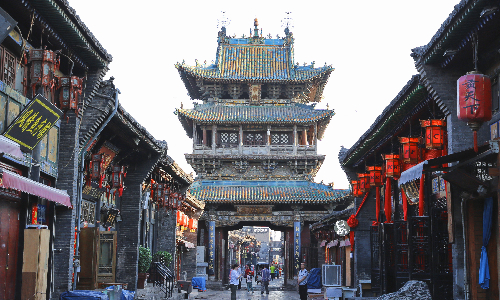
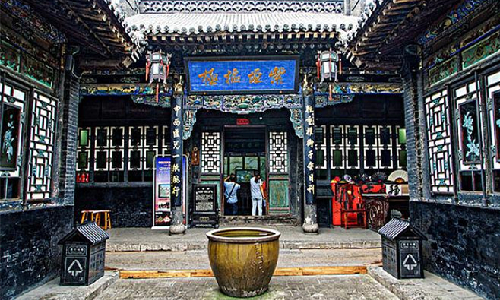
 Xi’an
Xi’an After breakfast, you will leave for Xi'an by estimated train D2503 10:58/13:52. Our guide will meet you at Xi'an Station. Xi'an is a must for visiting Northwest China. Whether it harbors the ancient Tang culture, or as the Starting Point of the Silk Road, Xi'an is full of characteristics and enchantment, waiting for you to explore. Of course, as the well-known ancient capital of the 13 dynasties, for thousands of years, Xi'an has gathered a variety of delicacies, you should not miss.
Then you will come to the first stop of your trip to Xi'an—the Great Mosque. The Great Mosque was built in 742 during the Tang Dynasty (618-907), more than 1,200 years ago. In the middle of the 7th century, a number of Arab traders and tourists came to Xi'an (then known as “Chang’ an”) and introduced Islam. Some of them married wives of Han nationality and settled down in Xi'an. Their descendants became the Hui people of Xi'an today. The Great Mosque was built to honor their ancestors. As a Chinese ancient architectural complex, it has both the characteristics of Chinese architecture "axis symmetry" and "pavilions", as well as Islamic carvings and decorations. Its mixed architectural style is a perfect combination of traditional Islamic and Chinese styles. Therefore, it also enjoys the reputation for being "the only Chinese-style Islamic temple in the world". At present, more than 60,000 Muslims living in Xi'an come to church in the Great Mosque.
Then we will walk about 500 meters to Muslim Street. As its name suggests, Muslim Street is a large Hui community of over 20,000 Muslims. They are the descendants of ancient Muslim traders and tourists. And they cling to their beliefs and cultural traditions within a tight-bonded community. With its dark stone streets, antique buildings, and Shaanxi-style food, you will be amazed at the fantastic cultural experience. Shaanxi Sandwich (La Zhi Rou Jia Mo) is highly recommended. Shaanxi Sandwich is a kind of toasted wheat buns stuffed with well-braised beef. You must have a try!
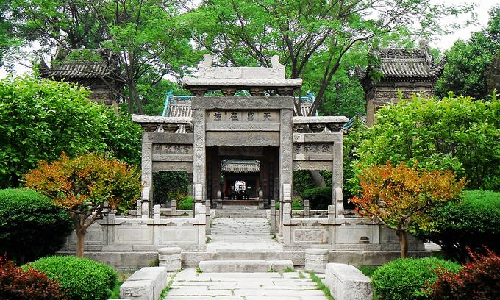
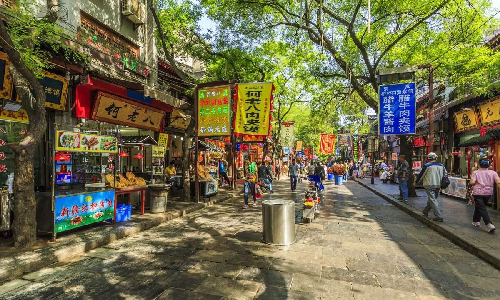
Today is the most exciting part of your visit to Xi 'an. We'll drive 40 kilometers northeast to the Terra Cotta Warriors and Horses Museum. In 1974, three large pits of terracotta warriors and horses were discovered in the east of the Mausoleum of the First Qin Emperor. Qin Shi Huang (259–210 BC) was the first Emperor of China, who established the first unified dynasty of China, the Qin Dynasty (221–207BC). When the terracotta army was discovered and opened to the public, it caused a sensation in the world. What's interesting is that each of the terracotta warriors was made to look like the soldiers of the time. After the unification of the six states, Qin implemented the national conscription system, and the troops came from all over the country. So, each terra cotta soldier is different in face shape, expression and age. We can still get a glimpse of the once-powerful Qin Empire from these terracotta warriors.
After lunch, we will go back to the downtown and visit the Big Wild Goose Pagoda. It was first built in 652 by the hierarch Xuanzang. Inside the Pagoda are Buddhist statues, Buddha's relics and Sanskrit scriptures brought back from India by Xuanzang. After spending 17 years and traversing more than 100 countries, Xuanzang finally found the Buddhist scriptures in India, the birthplace of Buddhism. Upon his return, Emperor Gaozong of the Tang Dynasty allowed him to build the Big Wild Goose Pagoda to translate and worship the scriptures. Therefore, the Big Wild Goose Pagoda is an important memorial building that has important historical value.
Then we will drive for 20 minutes to the Old City Wall. It is the largest and most intact ancient city wall remaining in China. The old City Wall was first built in 1370 during the Ming Dynasty (1368–1644) and has since undergone many repairs and additions. Standing on the high city wall, you can get a good view of the bustling streets of Xi 'an. Cycling around the old City Wall is the best choice.
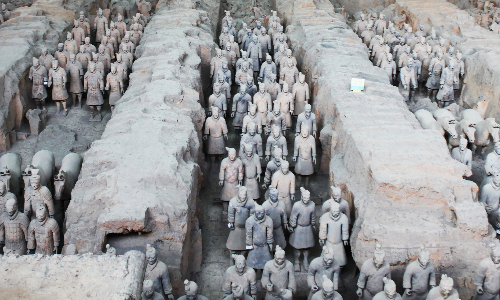
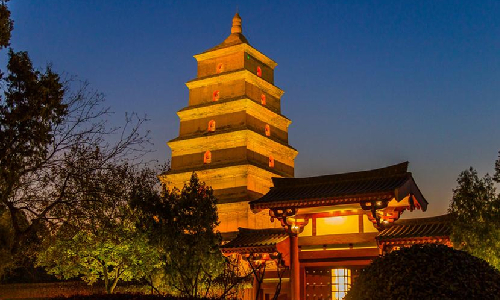
 Shanghai
Shanghai After breakfast, you will take the estimated train 9C6402 12:05/14:25 to Shanghai. Shanghai is the most modern city in China, which also has Chinese traditional characteristics. You can enjoy not only the old Western buildings in the Bund, but also the modern skyscrapers in Pudong.
The first thing you will visit is the Bund, which is on the west bank of the Huangpu River. There you will see the most attractive sight in the Bund. 52 classical buildings of different western architectural styles stand in the Bund, built by architects from different countries. They thus enjoy fame as a “museum of international architecture”. Their history goes back to China's colonial era in the late 19th century. Another top thing to do in the Bund is to watch the locals taking exercise in the morning. You can see the local people running, walking, practicing Tai Chi or swinging swords because they like starting a new day by doing exercise in the Bund. Get up early and watch them or maybe join them will let you feel the real local lifestyle.
Then you will visit Nanjing Road, which is a commercial street with a long history of over 100 years. It is also a paradise for domestic and foreign shoppers as it is filled with all kinds of goods from all over the world. You can find all the luxury brands on Nanjing Road. Besides, there are also some old-style stores which sell clocks, silk goods, jade, and wool. The old-style Dangdang tram is also a must you cannot miss. Sitting on a slow-moving bus, you can see new and old shops leaving in front of you as the wind blows. Isn't it agreeable? The whole ride takes about 10 minutes and will cost you 5 RMB.
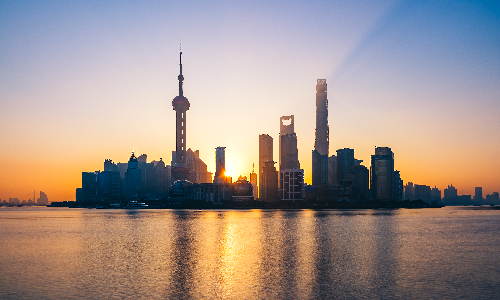

After breakfast, you will visit Yu Garden (closed each Monday). It was originally a private garden built by a government official in the Ming dynasty. He built this traditional classic garden for his aged parents so that they could live happily in their old age. Yu means peace and happiness in Chinese, so he named it Yu Garden to please his parents. Yu Garden is full of traditional Chinese architecture, with well-manicured trees, pavilions and ponds with koi carp. You must not miss the Great Rockery. It is about 14 meters high. Standing on top of it, you will have an overlooking view of the whole Yu Garden. You can also find souvenir shops and specialty restaurants selling snacks. Our guide will be glad to give you some recommendations.
Then after a twenty-minute drive, we will arrive at Jade Buddha Temple. In the late 19th century, the Jade Buddha Temple was built to keep two jade Buddha statues. As two Buddhist sculptures, they embody the expression of Buddha in the moment of meditation and enlightenment. It makes people feel quiet and thoughtful. They are also beautiful crafts. The two large statues are carved from whole white jades, inlaid with the agate and the emerald, reflecting the sanctity of the Buddha's beauty.
After lunch, you will visit Shanghai Tower. It is a giant landmark building in Shanghai, with a total height of about 632 meters. It is also the tallest building in Shanghai and the third tallest building in the world. We recommend that you can visit the exhibition hall on floor B1 first. Then you can ride in an express elevator at a super-fast speed! It only takes you 55 seconds to reach the 118th floor directly! Here, you can enjoy a spectacular panoramic view of the Huangpu River and nearby skyscrapers.
Then it comes to Tianzifang Market, the last stop today. Tianzifang Market was once home to traditional residential buildings and factories. Now it has been transformed into an art district with bars, restaurants, art studios, galleries and more. Artists and young people are obsessed with this place. There are not only the old Shanghai dwellings named shikumen, but also the remains of French-style architecture. The collision of traditional and modern, Chinese and Western styles gives Tianzifang Market its unique charm. It is also home to the world's culinary delights. You can eat Chinese food, Thai food, Japanese sushi, French goose liver and other cuisines from all over the world.

Today is the end of your wonderful tour. Your private guide and driver will pick you up at the hotel and transfer you to Shanghai Pudong International Airport on time according to your international flight schedule. Looking forward to seeing you next time!
Author: Wu Jing
| City | Five Star hotel list | Four Star hotel list |
|---|---|---|
| Beijing | Sunworld Dynasty Hotel Beijing Wangfujing | Sunworld Hotel Wangfujing |
| Datong | Yungang Meigao Hotel | Datong Garden Hotel |
| Pingyao | Pingyao Yide Hotel | Pingyao Dejuyuan Guesthouse |
| Xi'an | Tianyu Gloria Grand Hotel Xi'an | Sunworld Dynasty Hotel |
| Shanghai | Ocean Hotel Shanghai | Courtyard by Marriott Shanghai Central |
 |
![]() About your child or infant, please contact us for a discounted price.
About your child or infant, please contact us for a discounted price.



We started with a few days in Beijing & ended in Shanghai, from where we visited the Forbidden City and Great Wall. In between we visited Terra Cotta Warriors Museum, Panda Base, Shanghai Disneyland.

We had a wonderful holiday in China which will remain long in the memory. China is a breathtakingly beautiful country full of splendid temples and palaces, mountains and rivers, peaceful rural scenes and bustling shopping streets.
 QUICK ENQUIRY
QUICK ENQUIRY